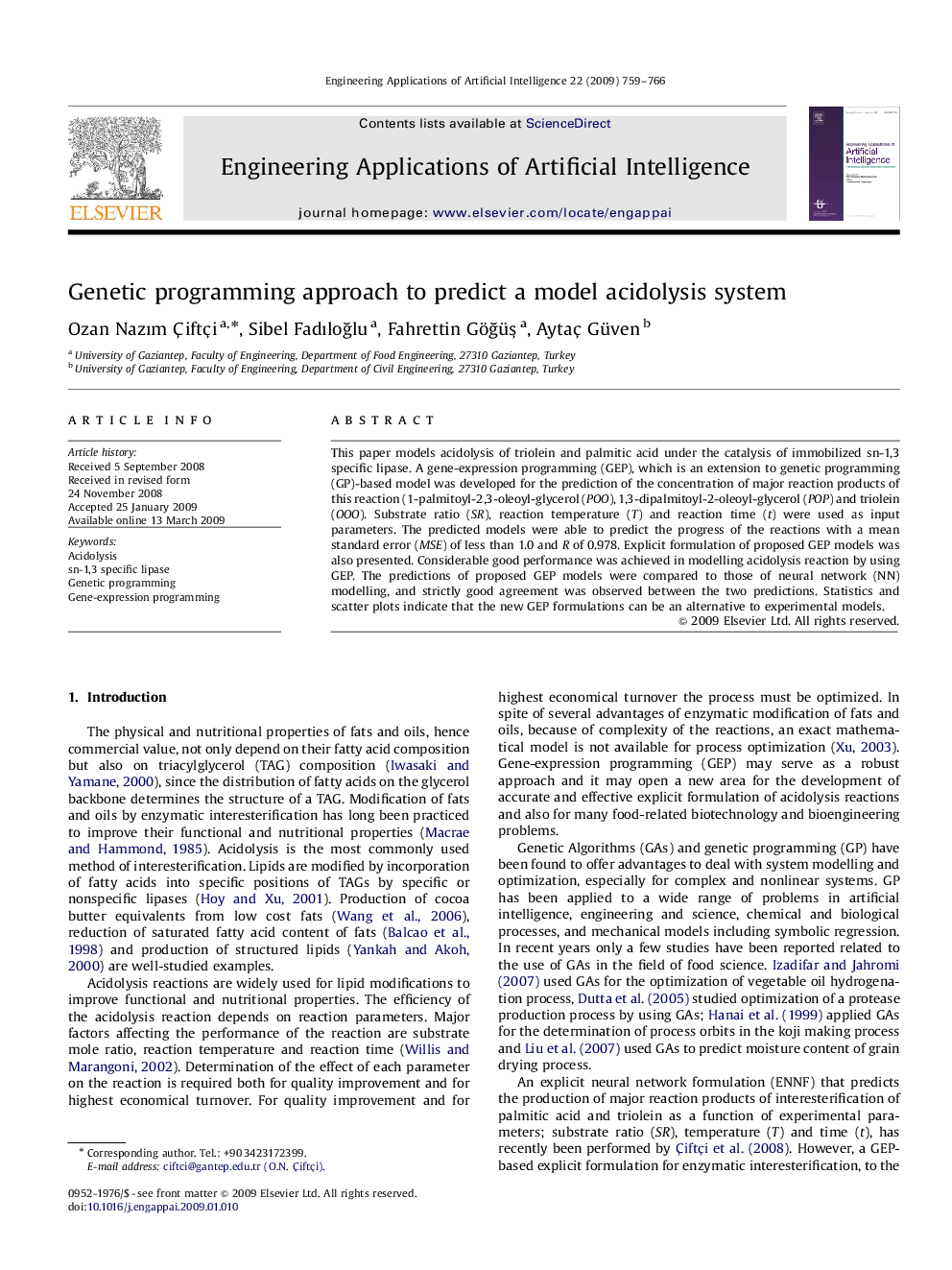| Article ID | Journal | Published Year | Pages | File Type |
|---|---|---|---|---|
| 381539 | Engineering Applications of Artificial Intelligence | 2009 | 8 Pages |
This paper models acidolysis of triolein and palmitic acid under the catalysis of immobilized sn-1,3 specific lipase. A gene-expression programming (GEP), which is an extension to genetic programming (GP)-based model was developed for the prediction of the concentration of major reaction products of this reaction (1-palmitoyl-2,3-oleoyl-glycerol (POO), 1,3-dipalmitoyl-2-oleoyl-glycerol (POP) and triolein (OOO). Substrate ratio (SR), reaction temperature (T) and reaction time (t) were used as input parameters. The predicted models were able to predict the progress of the reactions with a mean standard error (MSE) of less than 1.0 and R of 0.978. Explicit formulation of proposed GEP models was also presented. Considerable good performance was achieved in modelling acidolysis reaction by using GEP. The predictions of proposed GEP models were compared to those of neural network (NN) modelling, and strictly good agreement was observed between the two predictions. Statistics and scatter plots indicate that the new GEP formulations can be an alternative to experimental models.
